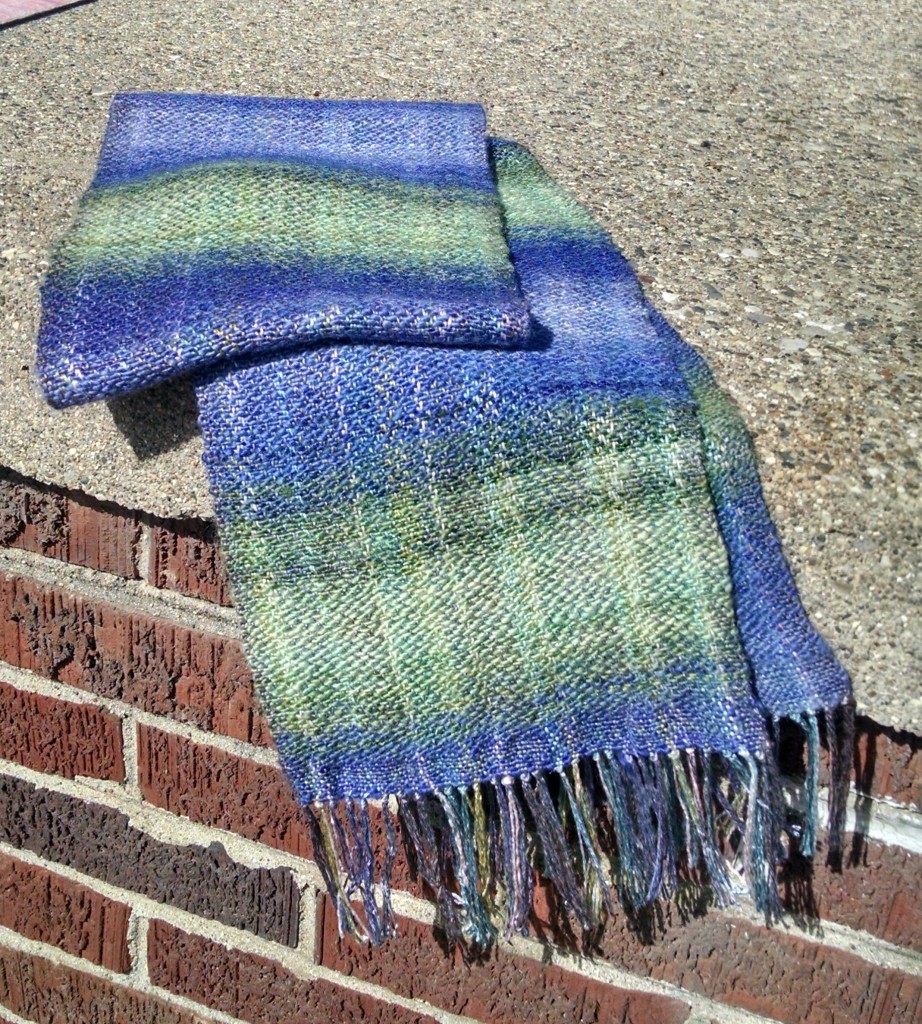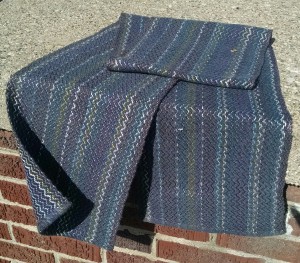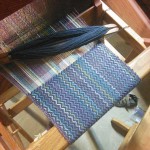- Iris
- Fresh off the loom!
- Helmut
The Details
Warp – hand-dyed rayon of long forgotten origin
Iris – weft of handspun singles
Helmut – weft of Valley Yarns Huntington, Grey
I’ve never been particularly good at calculating warp length.
I take that back, I can do the math blindfolded and with my hands tied behind my back, so I’m excellent at calculating how much warp I need. My real problem is in actually winding the warp because my inclination is to “just add a little bit more” in case my math was off (it isn’t), and my “little bit more” can range anywhere from a 18″ to two yards, depending on how much work went into prepping the warp yarn. In this particular case the warp was hand-dyed rayon, so I erred on the “let’s use every last inch” side.
- Fiber Reactive dyes FTW!
- DIY raddle
After dyeing, measuring, and winding the warp I pulled out my well-worn and much loved copy of The Handweaver’s Pattern Directory (and after re-teaching myself how to read drafts, but that’s a whole other post), I settled on a broken twill weave. I wanted to accentuate the weft’s texture while still having a pattern that was easy to memorize. My weaving time is broken into half hour chunks, and it often coincides with laundry and the shorties screaming playing downstairs, so I also needed something that would be easy to stop and start.

Once I was finished with Iris I had a little over 9ft of warp left, thanks to my excessive overestimation. It just seemed like a waste to cut it off, so I grabbed some sock yarn and sat down to do another easy mindless twill, the herringbone.

Helmut is not quite as long as Iris – she’s about 9ft while Helmut is only 7.5ft, but I love how different they turned out. Same warp, same tie-up, different treadling patterns. Weaving is such a intriguing combo of math, science, and creativity.





